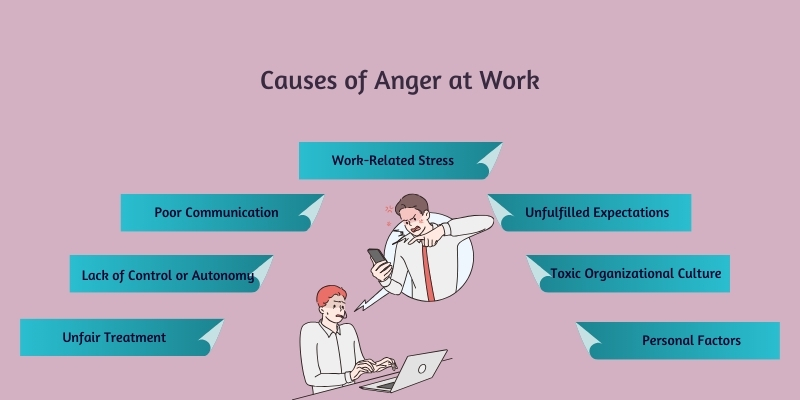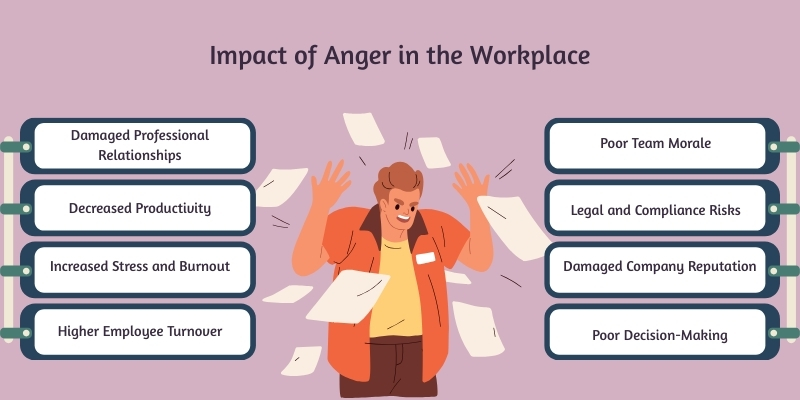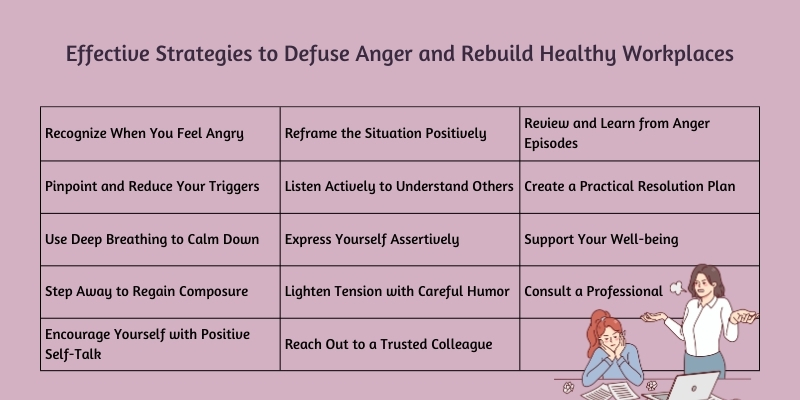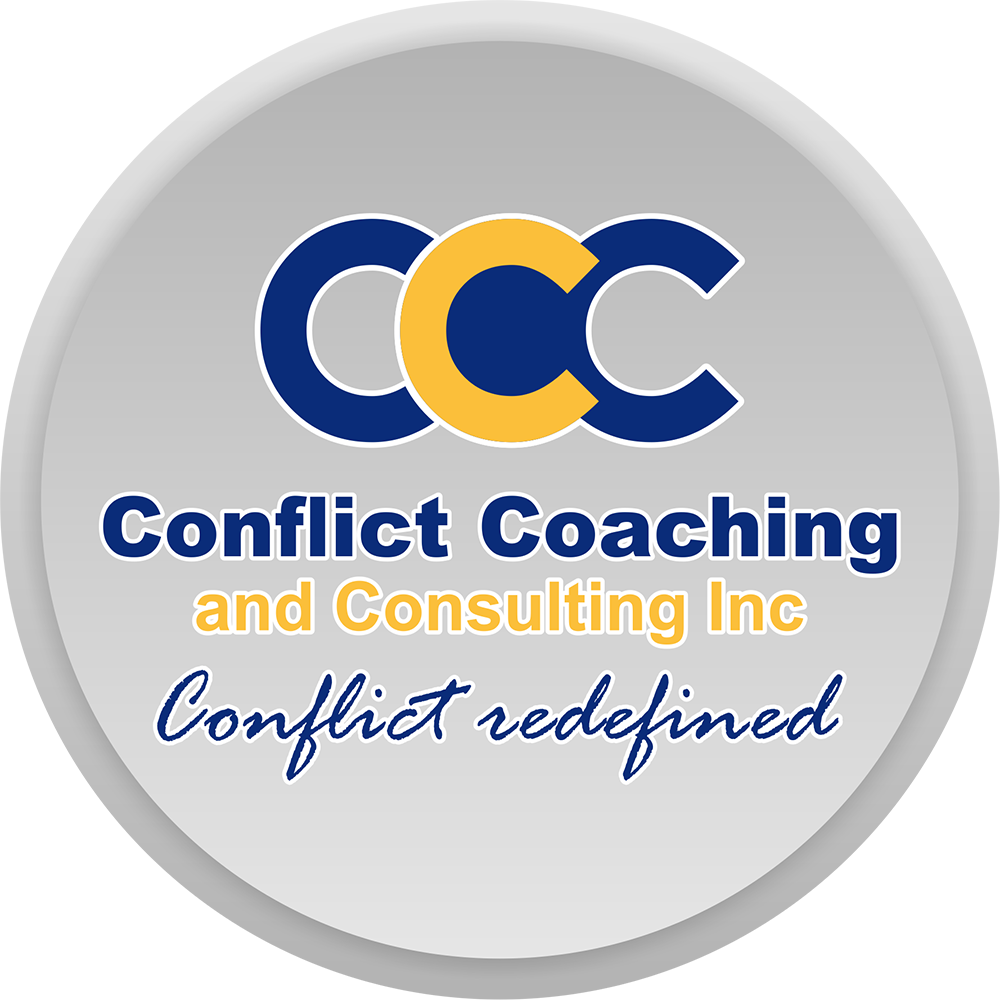
How to Manage Your Anger in the Workplace
That moment when your coworker takes credit for your idea again, or your boss dumps another last-minute assignment on your desk—we’ve all felt that surge of workplace rage.
But here’s the wake-up call: 64% of U.S. workers report experiencing anger at work frequently, and nearly 1 in 5 admit it’s affected their job performance.
Left unchecked, that anger doesn’t just ruin your day—it sabotages relationships, stalls promotions, and even triggers health issues like hypertension and insomnia.
This isn’t about pretending frustration doesn’t exist. It’s about channeling it productively—for your sanity, your reputation, and your paycheck. In this guide, we’ll break down:
-
What truly fuels workplace anger (hint: it’s not just annoying colleagues)
-
The hidden costs of unchecked anger, from lost productivity to HR complaints
-
Actionable strategies to stay cool under fire—without becoming a doormat
Because in today’s high-pressure work culture, mastering how to deal with anger at work isn’t just a soft skill—it’s career insurance.
Causes of Anger at Work
Workplace anger doesn’t appear out of nowhere—it’s often a reaction to specific, recurring triggers.
Understanding these root causes is the first step toward addressing them effectively.
When employees recognize what fuels their frustration, they can develop targeted strategies to manage emotions and improve their work environment.

Here’s a breakdown of the most common causes of anger at work and how they impact employees:
1. Work-Related Stress
Why it triggers anger
-
Unmanageable workloads: When employees face constant deadlines with insufficient time or resources, stress builds into resentment.
-
Lack of support: No backup from managers or teams leaves people feeling abandoned in high-pressure situations.
-
Burnout cycle: Chronic stress leads to exhaustion, making even minor setbacks feel unbearable.
Example
An employee handling three people’s roles after layoffs may snap at colleagues over small errors—not because they’re “irrational,” but because they’re stretched beyond capacity.
2. Poor Communication
Why it triggers anger
-
Unclear instructions: Vague directions create confusion, leading to rework and frustration.
-
Passive-aggressive tones: Emails or comments like “Per my last email…” escalate tension unnecessarily.
-
Ignored input: When employees feel unheard, they perceive their expertise as undervalued.
Example
A team member misses a deadline because priorities weren’t communicated clearly. When criticized, they react defensively, sparking conflict.
3. Lack of Control or Autonomy
Why it triggers anger
-
Micromanagement: Constant oversight signals distrust, making employees feel infantilized.
-
No decision-making power: Being forced into poorly planned strategies breeds helplessness.
-
Rigid processes: Inability to adjust workflows for efficiency feels stifling.
Example
A skilled employee quits after months of having every task scrutinized, later citing “no freedom to do my job” as the reason.
4. Unfair Treatment
Why it triggers anger
-
Favoritism: Unequal rewards or promotions destroy morale.
-
Unaddressed discrimination: Bias (racial, gender, age-based) fosters deep resentment.
-
Broken promises: Raises or role changes that never materialize feel like betrayal.
Example
Two employees with similar roles discover a pay gap. The underpaid employee’s productivity drops as anger over the injustice grows.
5. Unfulfilled Expectations
Why it triggers anger
-
Misaligned job descriptions: Being hired for X but tasked with Y feels deceptive.
-
Stalled growth: Promised promotions that never happen lead to disillusionment.
-
Vague feedback: Without clear improvement paths, employees feel set up to fail.
Example
A top performer passed over for a promotion starts disengaging, thinking, “Why bother excelling if it goes unnoticed?”
6. Toxic Organizational Culture
Why it triggers anger
-
Leadership hypocrisy: Rules that apply to staff but not executives breed contempt.
-
Gossip/cliques: Exclusionary social dynamics make the workplace feel hostile.
-
No accountability: Bullies or slackers facing no consequences demoralize others.
Example
A company preaches “work-life balance” but rewards 80-hour weeks, creating resentment among burned-out employees.
7. Personal Factors
Why they trigger anger
-
Spillover from home stress: Financial worries or family issues shorten fuses at work.
-
Mental health struggles: Undiagnosed anxiety or depression can manifest as irritability.
-
Past workplace trauma: Previous bad experiences color reactions to current jobs.
Example
An employee going through a divorce snaps at a coworker’s harmless joke, then regrets the overreaction.
Anger at work is a symptom, not the root problem. Whether it’s systemic issues like poor culture or personal struggles like stress overload, identifying the real cause allows for solutions—like setting boundaries, seeking mediation, or even job changes—before resentment does lasting damage.
Effects of Anger in the Workplace

Anger doesn’t just affect the person feeling it—it ripples through teams, productivity, and even a company’s bottom line.
Left unchecked, workplace anger issues create a toxic cycle that damages relationships, performance, and organizational health.
Understanding these consequences is crucial for both employees and employers to address issues before they escalate.
Here’s how unchecked anger erodes workplaces in measurable ways:
1. Damaged Professional Relationships
How it manifests
-
Eroded trust: Colleagues walk on eggshells, fearing outbursts or passive-aggressive behavior.
-
Avoidance culture: Team members stop collaborating to “stay under the radar.”
-
Communication breakdowns: Critical feedback is withheld, leading to unresolved issues.
Example
After a manager frequently yells during meetings, employees stop sharing honest opinions, stalling innovation.
2. Decreased Productivity
How it manifests
-
Time wasted: Employees spend energy managing emotions instead of working.
-
More errors: Stress from anger impairs concentration, increasing mistakes.
-
Meeting inefficiency: Heated arguments derail agendas.
Stat
Teams with unresolved conflict experience a 20–40% drop in productivity (National Institute of Health).
3. Increased Stress and Burnout
How it manifests
-
Physical symptoms: Headaches, insomnia, and high blood pressure rise.
-
Emotional exhaustion: Employees feel drained and detached.
-
Absenteeism spikes: People call in sick to avoid toxic environments.
Example
A study found 60% of employees in high-anger workplaces report chronic stress-related illnesses.
4. Higher Employee Turnover
How it manifests
-
Top talent leaves first: High performers won’t tolerate hostility.
-
Replacement costs: Hiring/training new staff costs 6–9 months of salary per employee.
Stat
25% of employees quit jobs due to unhealthy workplace dynamics (National Institute of Health).
5. Poor Team Morale
How it manifests
-
Silent disengagement: Employees do the bare minimum to avoid conflict.
-
No initiative: Fear of criticism kills creativity and problem-solving.
Example
A team misses deadlines because members are too demoralized to collaborate.
6. Legal and Compliance Risks
How it manifests
-
Harassment claims: Yelling or threats can lead to lawsuits.
-
HR investigations: Frequent complaints trigger costly interventions.
Stat
12% of workplace lawsuits cite “hostile environment” due to unchecked anger.
7. Damaged Company Reputation
How it manifests
-
Glassdoor reviews: “Toxic culture” warnings deter top candidates.
-
Client loss: Public outbursts scare away business.
Example
A viral video of a manager berating staff leads to a 15% drop in job applications.
8. Poor Decision-Making
How it manifests
-
Rash actions: Quick firings or punitive policies backfire.
-
Short-term fixes: Anger-driven decisions ignore long-term consequences.
Example
A CEO cancels a profitable project in a fit of anger, costing the company $2M.
Anger’s hidden costs are financial, operational, and human. Companies that ignore it face:
-
Lower profits
-
Higher turnover
-
Legal liabilities
14 Effective Strategies to Deal with Anger at Work

Workplace anger doesn’t have to control you—or your career. The key is recognizing anger as a signal, not a sentence, and using proven techniques to respond constructively.
These strategies help you regain control, improve relationships, and create a more positive work environment for everyone.
Here’s how to transform anger into productive action:
1. Recognize When You Feel Angry
Anger manifests through physical signals (tight chest, clenched jaw) and emotional cues (irritation, resentment). Noticing these early warnings creates a critical pause between trigger and reaction.
For example, when receiving tough feedback, identifying your rising frustration allows you to respond professionally rather than defensively.
Keep an anger log to track patterns. Note specific situations (like weekly planning meetings) where frustration typically surfaces.
This awareness helps you anticipate and prepare for challenging interactions rather than being caught off guard.
2. Pinpoint and Reduce Your Triggers
Identify recurring anger sources—whether it’s a colleague’s condescending tone or last-minute deadline changes. Once recognized, develop mitigation strategies.
If Monday meetings consistently frustrate you, request agendas in advance or clarify expectations beforehand.
For unavoidable triggers, establish boundaries. Limit interactions with difficult coworkers to email when possible, or use neutral responses to defuse tension.
Proactively managing these situations reduces daily stress buildup.
3. Use Deep Breathing to Calm Down
The 4-7-8 breathing technique (inhale 4 sec, hold 7, exhale 8) physically interrupts the stress response.
Use it discreetly during tense moments—before responding to a critical email or when receiving unexpected criticism in a meeting.
This simple method lowers heart rate and cortisol levels, creating mental space to choose a thoughtful response rather than reacting impulsively.
Regular practice makes it more effective during high-stress situations.
4. Step Away to Regain Composure
When emotions escalate, a brief withdrawal prevents regrettable outbursts. Politely excuse yourself (“Let me take five minutes to gather my thoughts”) and use the time for a walk or quiet breathing.
Physical distance allows your nervous system to reset. Returning with clarity leads to more productive discussions than continuing while emotionally flooded.
Many professionals keep “cool-down” rituals like walking around the block or splashing cold water on their face.
5. Encourage Yourself with Positive Self-Talk
Replace anger-amplifying thoughts (“This is unacceptable!”) with balanced perspectives (“I can handle this professionally”). Develop go-to mantras like “This isn’t personal” or “I choose my response.”
This mental discipline prevents cognitive distortions from escalating anger. Over time, it builds emotional resilience in challenging work situations.
6. Reframe the Situation Positively
Shift from “This is unfair” to “What can I learn here?” When passed over for a project, consider it an opportunity to develop new skills.
If criticized, view it as a chance to improve rather than a personal attack.
This cognitive flexibility reduces perceived threats and transforms frustration into motivation for growth.
7. Listen Actively to Understand Others
In conflicts, focus on truly comprehending the other perspective before responding. Paraphrase their points (“So your main concern is…”) to demonstrate understanding.
This approach often reveals misunderstandings and makes the other person feel heard, de-escalating tension. Many arguments persist simply because people don’t feel understood.
8. Express Yourself Assertively
Use “I” statements to voice concerns without blame: “I feel frustrated when decisions affecting my work are made without my input.”
Pair this with specific requests: “Could we discuss major changes beforehand?”
This communication style addresses issues directly while preserving professional relationships.
9. Lighten Tension with Careful Humor
Well-timed, inclusive humor can reset group dynamics. Comment on shared challenges (“Well, that didn’t go as planned!”) rather than targeting individuals.
Avoid sarcasm or sensitive topics. When in doubt, err on the side of professionalism.
10. Reach Out to a Trusted Colleague
Process difficult interactions with a neutral coworker or mentor. Ask: “How would you handle this situation?” External perspectives often reveal blind spots and alternative approaches.
Many organizations offer confidential employee assistance programs for these conversations.
11. Review and Learn from Anger Episodes
After conflicts, analyze: What triggered me? How did I respond? What would work better next time? Weekly reflections turn incidents into learning opportunities.
This practice builds emotional intelligence over time, helping you navigate similar situations more effectively.
12. Create a Practical Resolution Plan
For recurring issues, develop structured solutions. If unclear communication frustrates you, propose weekly check-ins. If workload triggers anger, negotiate priority frameworks.
Written plans with specific steps prevent repetitive frustration and demonstrate professionalism in addressing challenges.
13. Support Your Well-being
Chronic stress lowers anger thresholds. Protect your resilience through adequate sleep, nutrition, and regular breaks. Notice when skipped meals or back-to-back meetings affect your mood.
Preventative self-care makes you less reactive to workplace stressors.
14. Consult a Professional When Needed
Seek help if anger affects job performance or relationships. Employee assistance programs, anger management classes for employees, and targeted CBT therapy provide tailored strategies for sustainable emotional control.
Professional support is particularly valuable if anger has caused HR involvement or you frequently regret reactions. It’s an investment in your career and wellbeing.
Implementation Tip: Master 2-3 strategies first before adding more. Consistent small improvements create lasting change in how you experience and express workplace anger.
Conclusion
Anger at work doesn’t have to derail your career—it can become a catalyst for positive change when managed effectively.
By implementing even a few of these strategies, you’ll gain control over emotional reactions and build stronger, more productive workplace relationships. Remember, the goal isn’t to eliminate anger completely but to harness its energy constructively.
The true cost of unmanaged anger—damaged reputations, missed opportunities, and strained collaborations—far outweighs the effort of developing these skills.
Start small: identify your triggers, practice breathing techniques, or reframe one frustrating situation this week. Over time, these habits will reshape how you experience workplace challenges.
Your career success depends not just on technical skills, but on emotional mastery. Choose one strategy today, and turn workplace anger from a liability into your professional advantage.
The most respected leaders aren’t those who never feel anger—they’re the ones who’ve learned how to deal with anger at work with wisdom and composure.





Responses